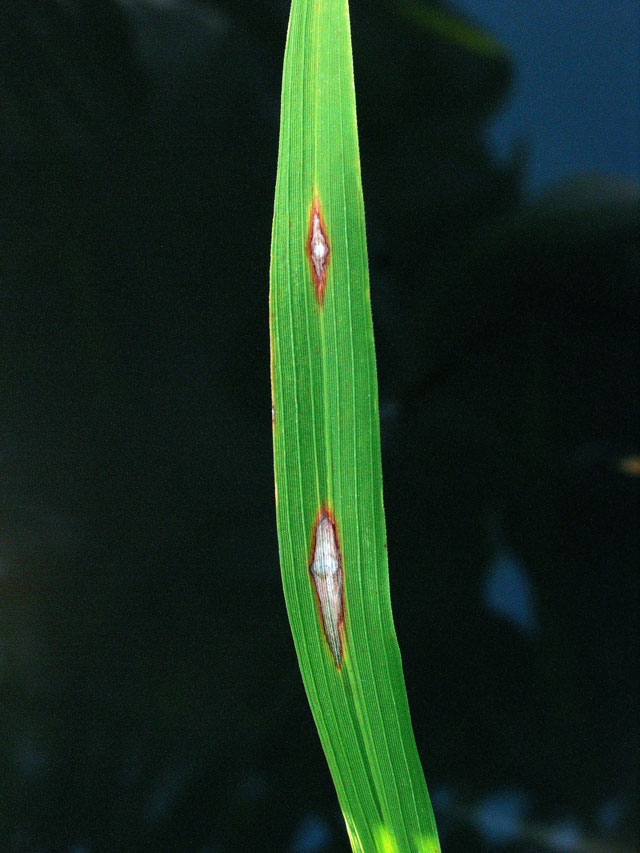Rice blast
Asexual stage: pyricularia oryzae ( p. grisae )
Sexual stage: Magnaporthe grisea
First time reported in Nepal in 1966 A.D.
The typical symptoms appear on leaves, leaf sheath, rachis, nodes and even the glumes are also attacked.
Leaf blast
- Small water soaked bluish green specks,soon enlarge diamond shaped spots with grey centre and dark brown margin.

Node blast:
- In infected nodes, irregular black areas that encircle the nodes can be noticed.
- The affected nodes may break up and all the plant parts above the infected nodes may die (Node blast).

Collar blast:
- The collar of a rice plant refers to the junction of the leaf blade and the sheath.
- Necrosis at the union of the two tissues.
- Collar infections can kill the entire leaf and may extend a few millimeters into and around the sheath.
Neck or Panicle blast:
- The neck of the rice plant refers to that portion of the stem that rises above the leaves and supports the seed head or panicle.
- At the flower emergence, the fungus attacks the peduncle which is engirdled, and the lesion turns to brownish-black.
- Referred to as rotten neck/neck rot/neck blast/panicle blast.
- In early neck infection, grain filling does not occur and the panicle remains erect like a dead heart caused by a stem borer. In the late infection, partial grain filling occurs.
- Lesions can be found on the panicle branches, spikes, and spikelets.
- The lesions are often gray brown discolorations of the branches of the panicle, and, over time, the branches may break at the lesion.
Rice seed
- Brown spots, blotches, and occasionally the classic diamond-shaped lesion often seen on leaves.
Etiology:
Gray conidiophores that bear terminal, pear-shaped, mostly two-septate conidia
Favorable condition:
- Application of excessive doses of nitrogenous fertilizers,
- Intermittent drizzles,
- cloudy weather,
- high relative humidity (93-99 per cent),
- low night temperature (between 15-20 0C or less than 26 0C)
- more number of rainy days, longer duration of dew, cloudy weather
- Slow wind movement and availability of collateral and alternate host.
Survive and spread:
- Survive: Mycelium and conidia on soil, debris, seed, and collateral host.
- Spread: air born conidia, transfer through wind, rain.
- Toxin: Pyricularin and alpha picolinic acid contribute to the rice blast.
- Alternate hosts: Digitaria marginata, Panicum repens, Dinebra retroflexa.
Collateral host: Sugarcane
Management:
- Resistant varieties:
Leaf blast: Barkhe 2014, Barkhe 2024, Super 004.
blast: Barkhe 1005, Barkhe 3004, Barkhe 1006
- Seed treatment with Pseudomonas fluorescens (Biocare-B) @10 gm/lit of water for 30 min.
- Seed treatment with Bavistin or carbendazim @2-3 gm/kg of seeds before bed preparation.
- Seedling root dip treatment with P. fluorescens @ 4gm/lit of water for 30 min.
- Spray hexaconazole 5%EC (Avon, Comfort, Ki Hexa, Hexa plus) @2 ml/lit or Kasugamycin 3% SL (Kesu-b, KI-mycin) @1.5 gm/lit of water.
- Spray with Hinosan 1.5 ml/lit water . Once on a seed bed, two times on tillering stage, two times on neck emergence stage.
- Systemic fungicides like triazoles and strobilurins can be used judiciously for control to control blast. A fungicide application at heading can be effective in controlling the disease.